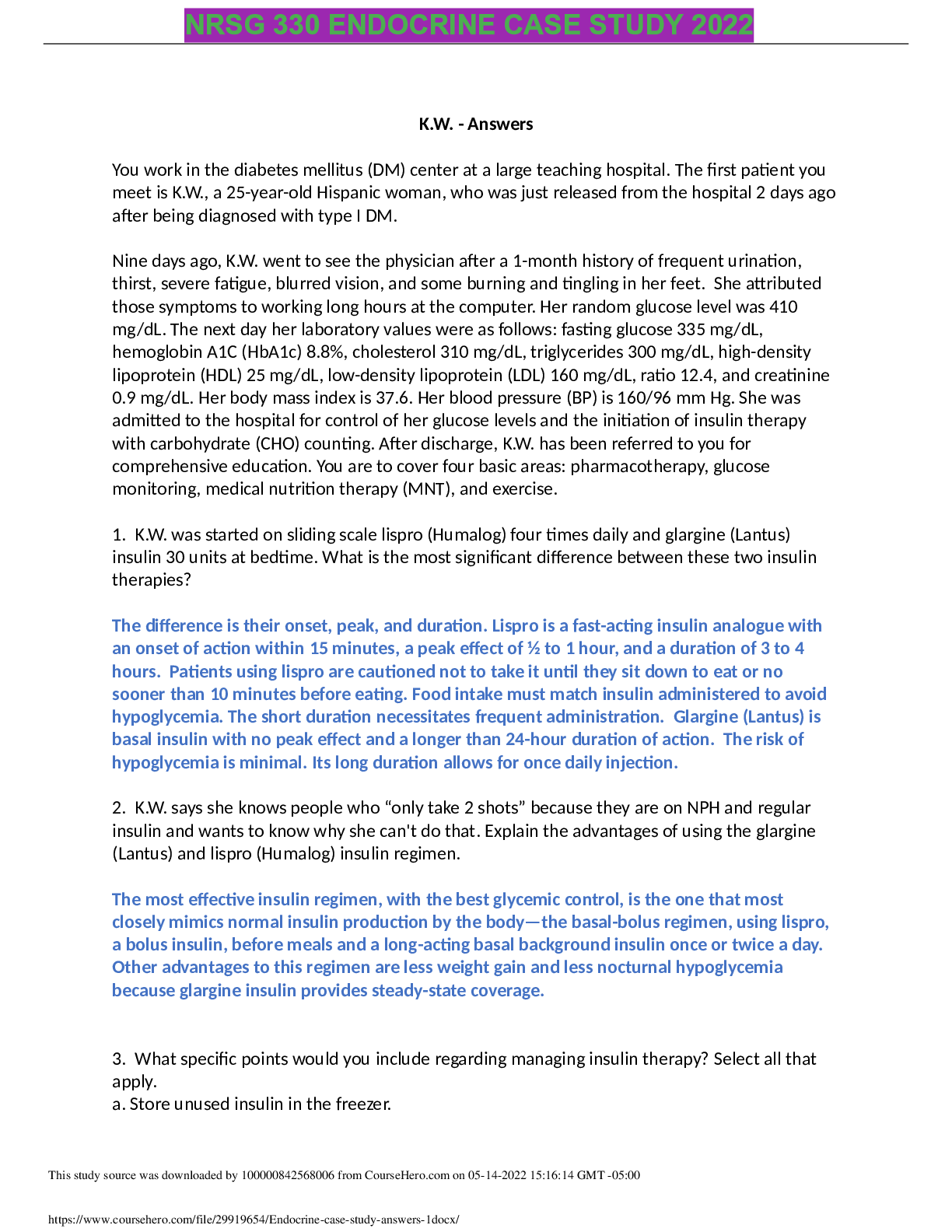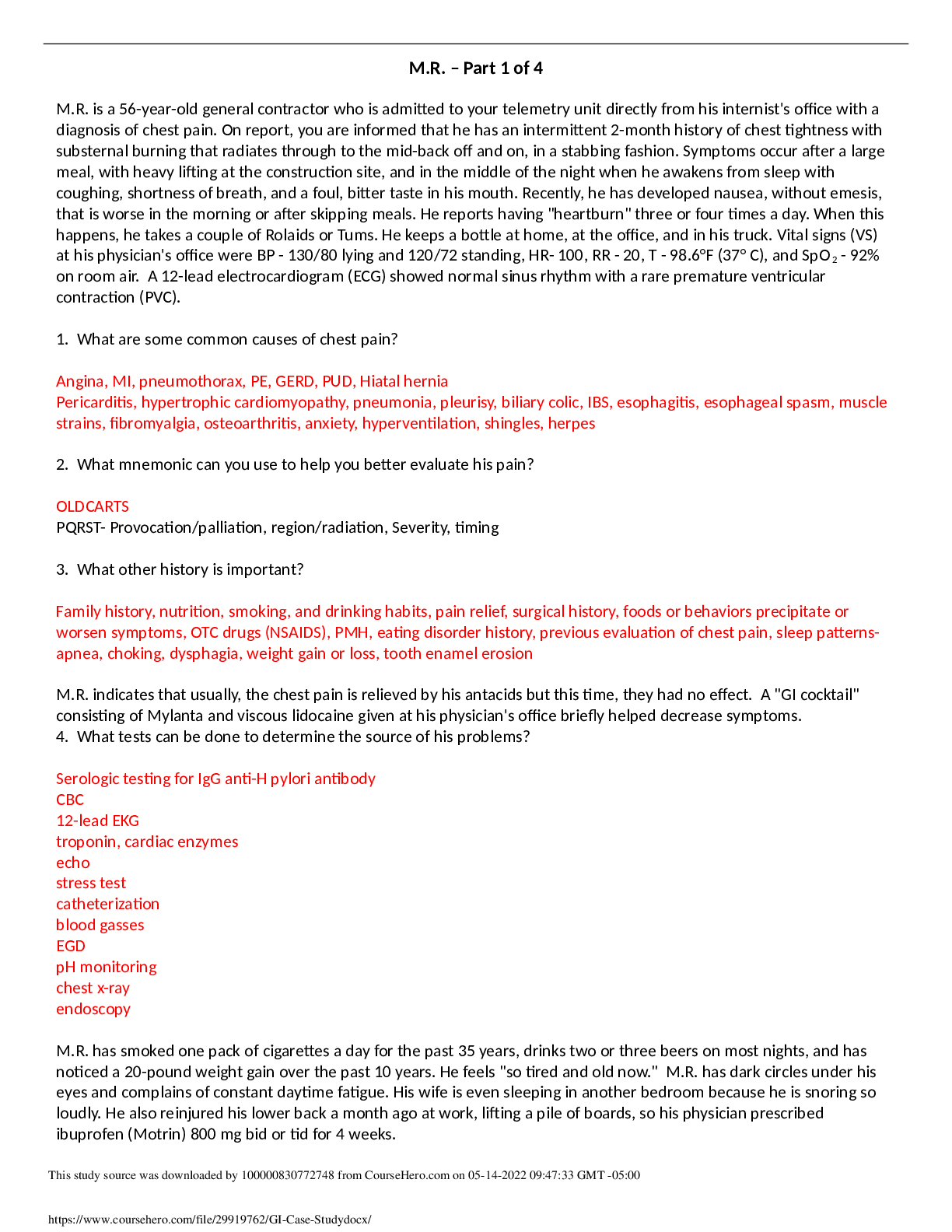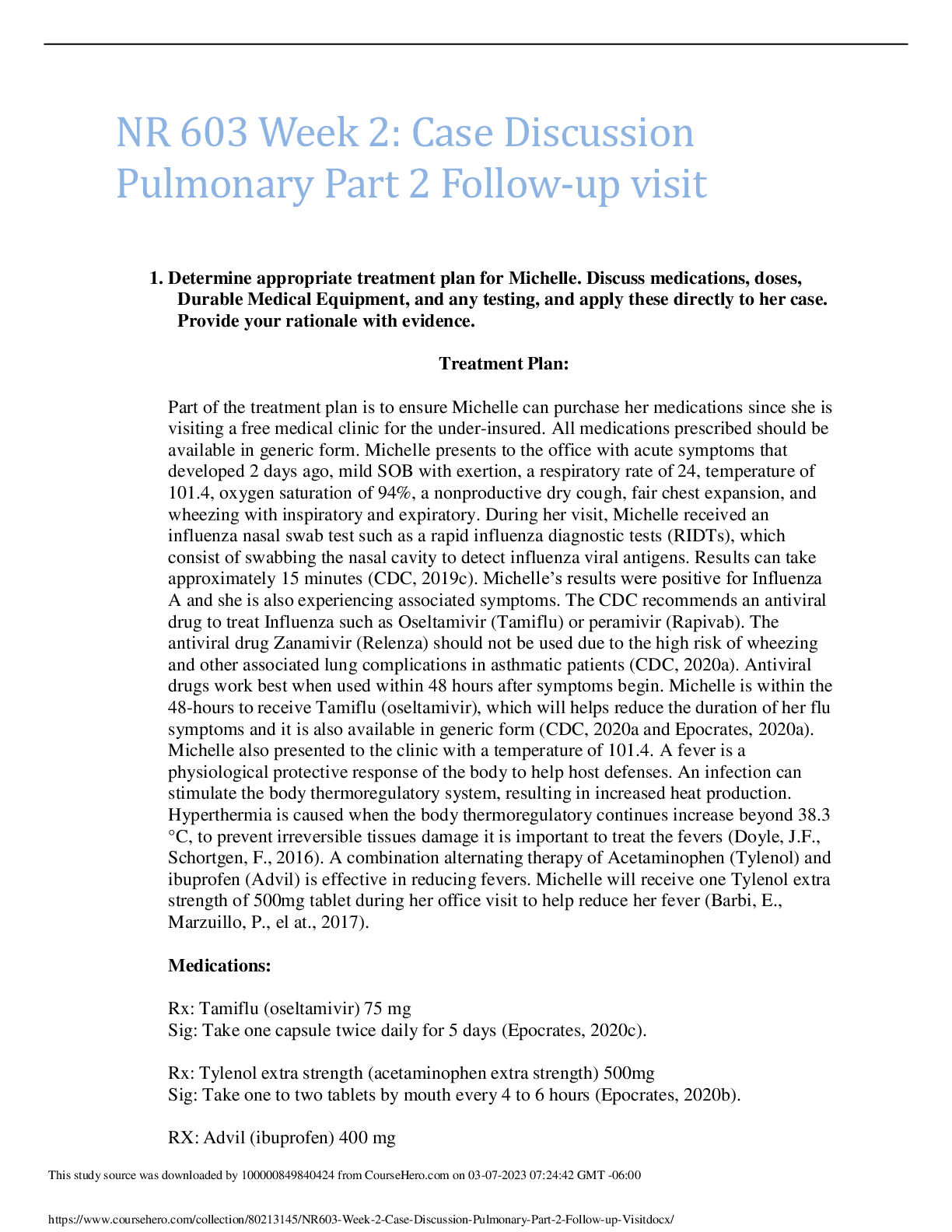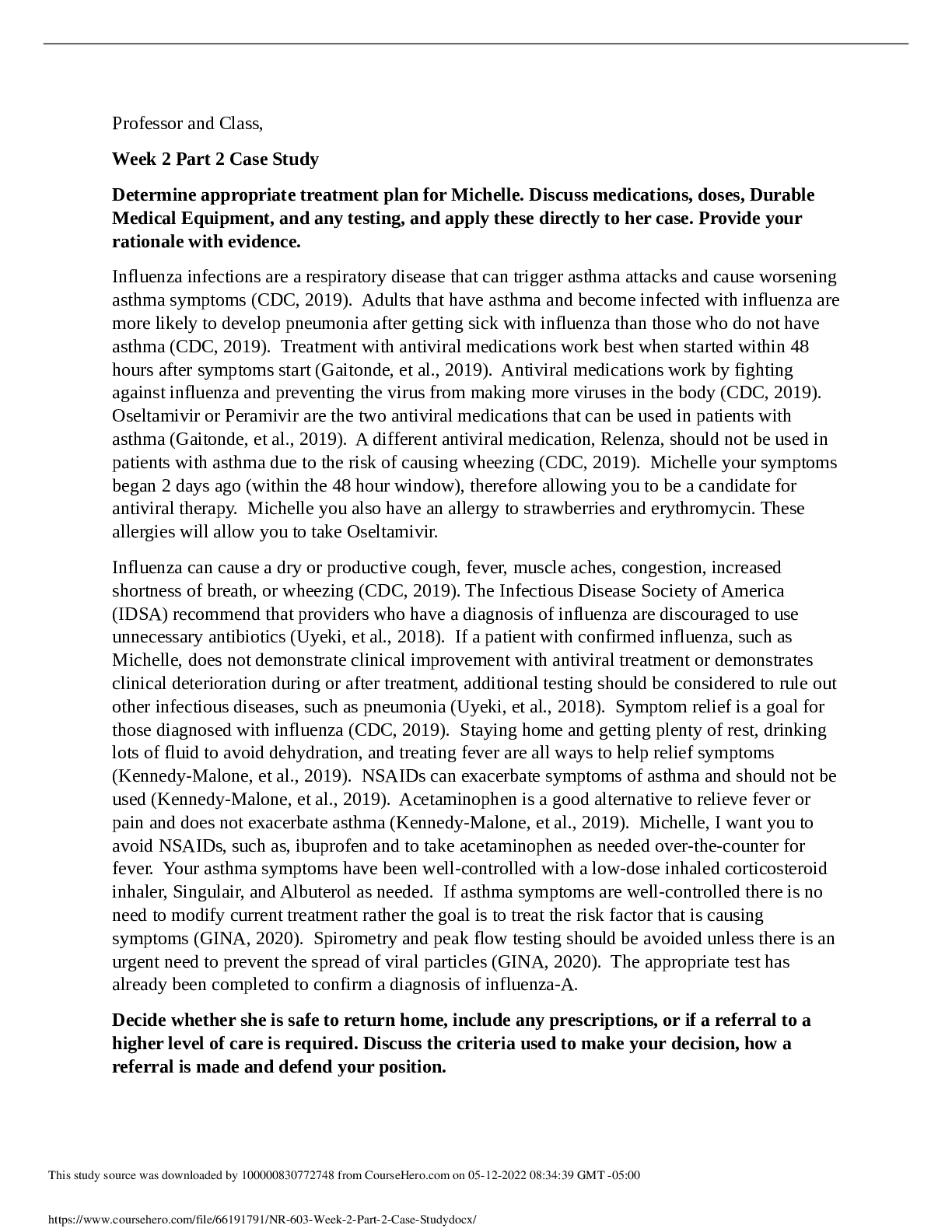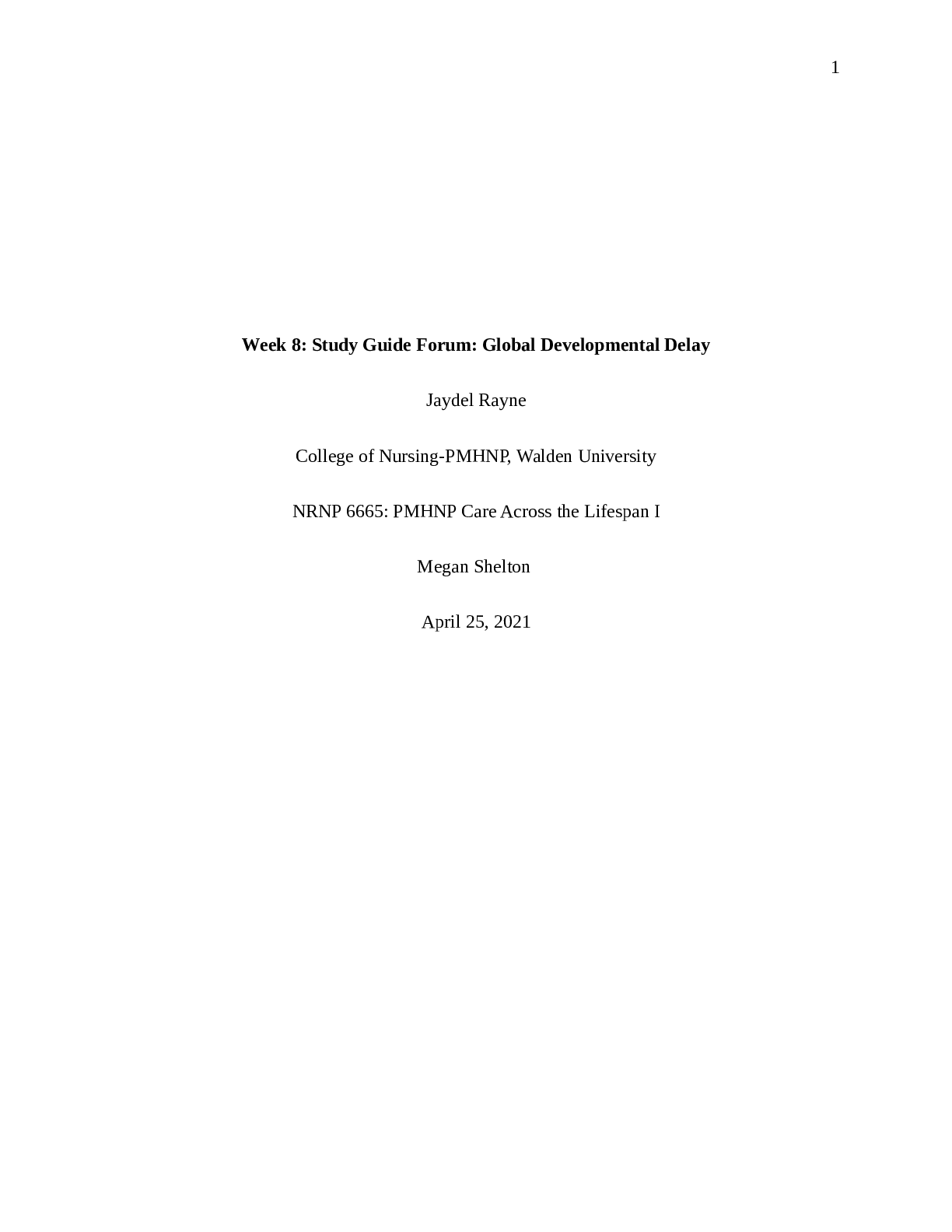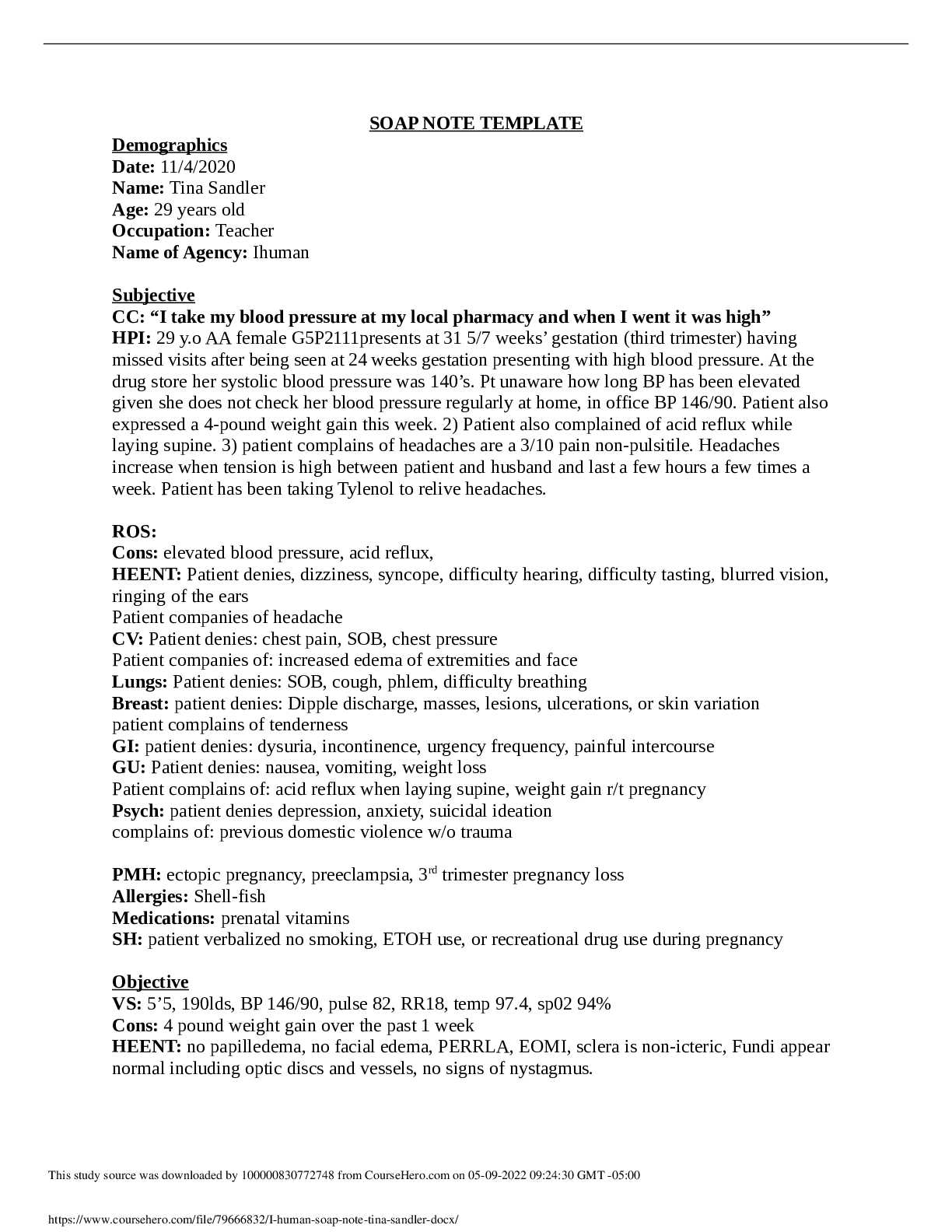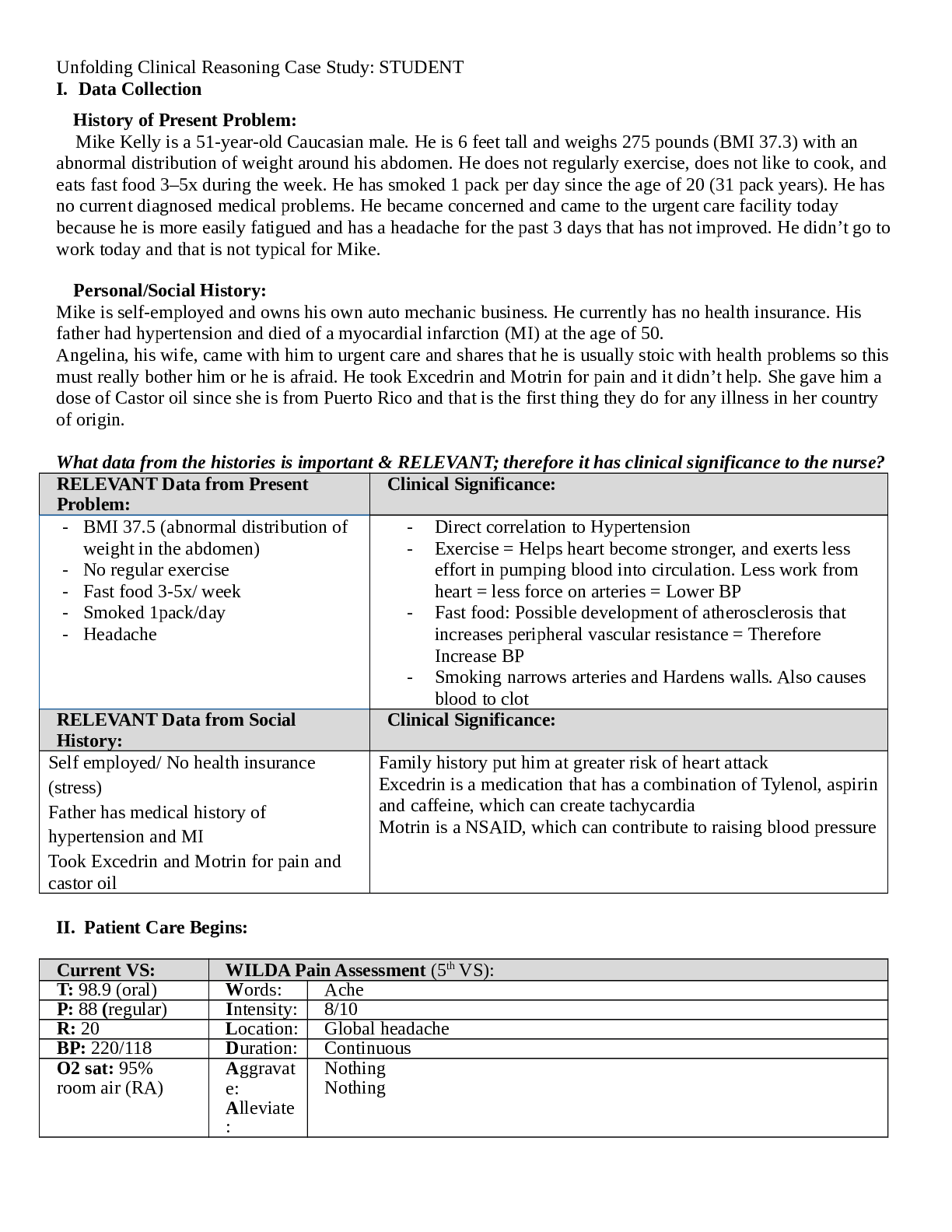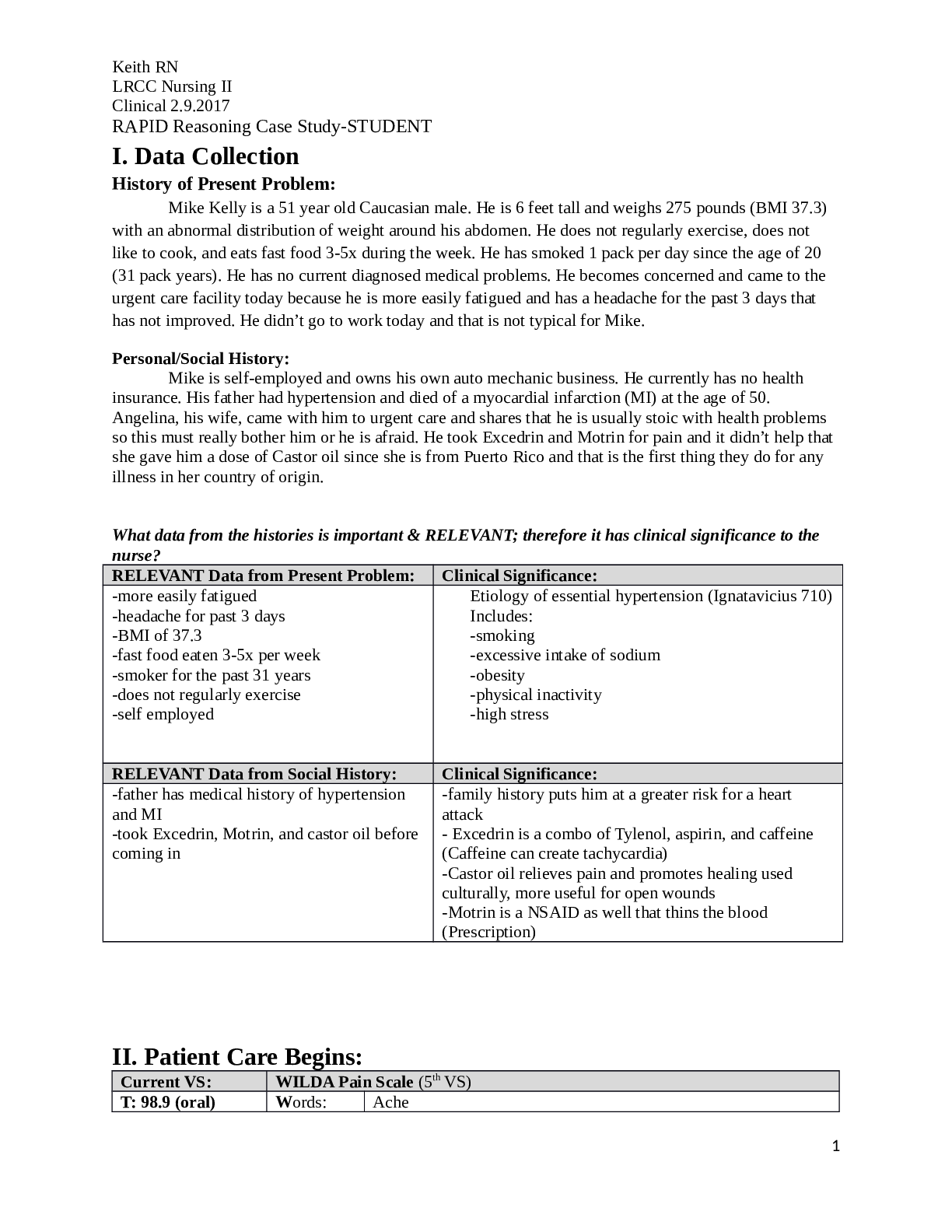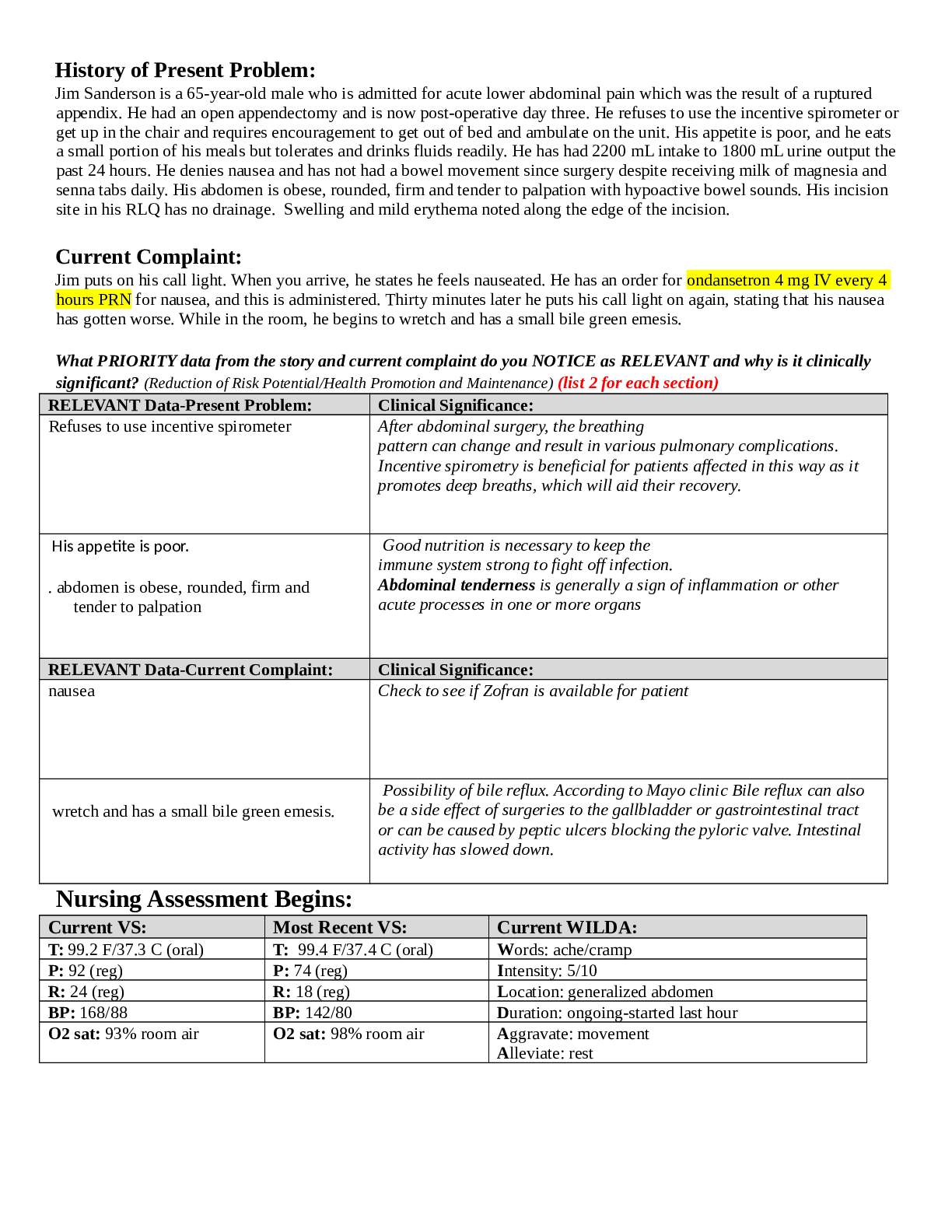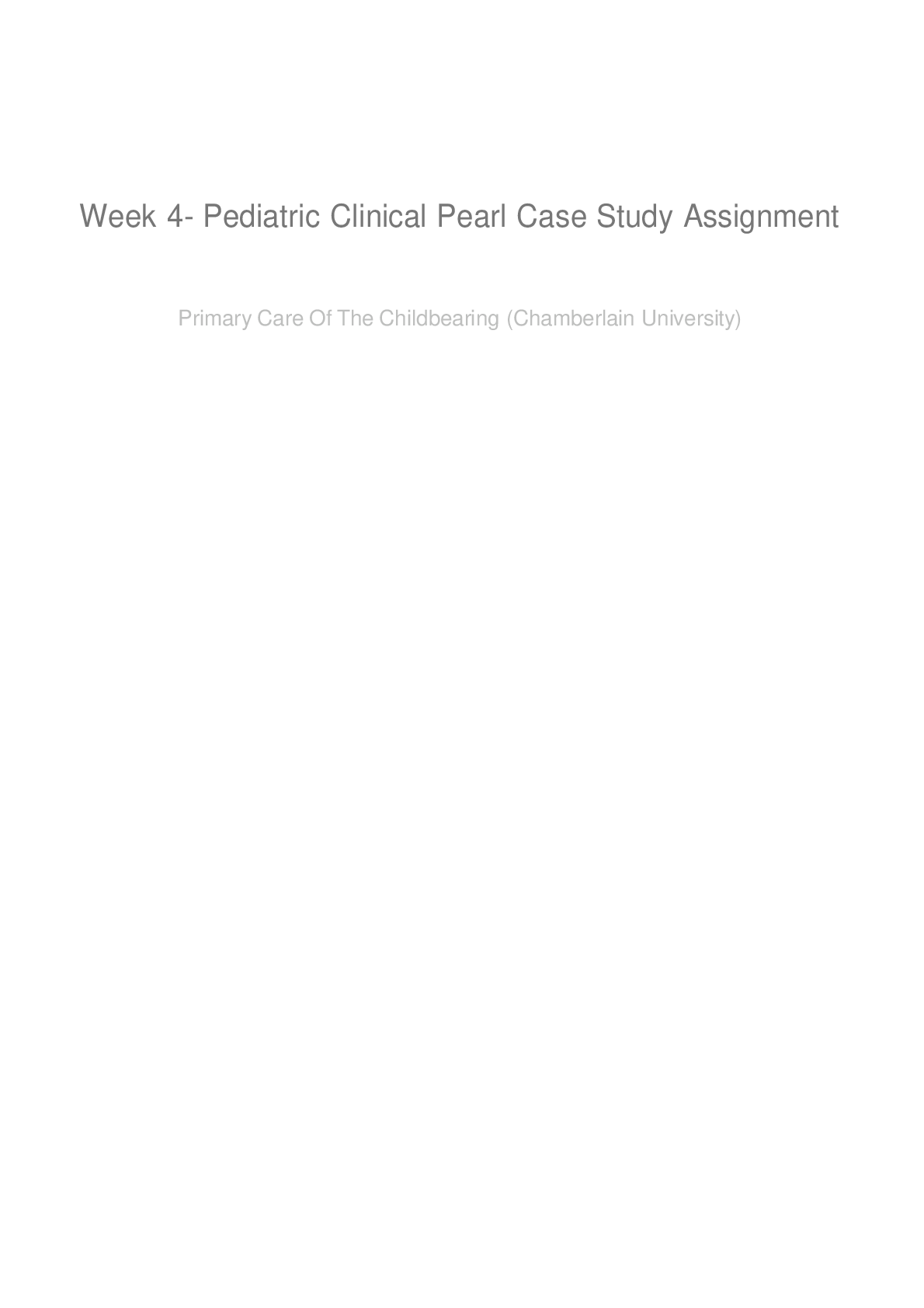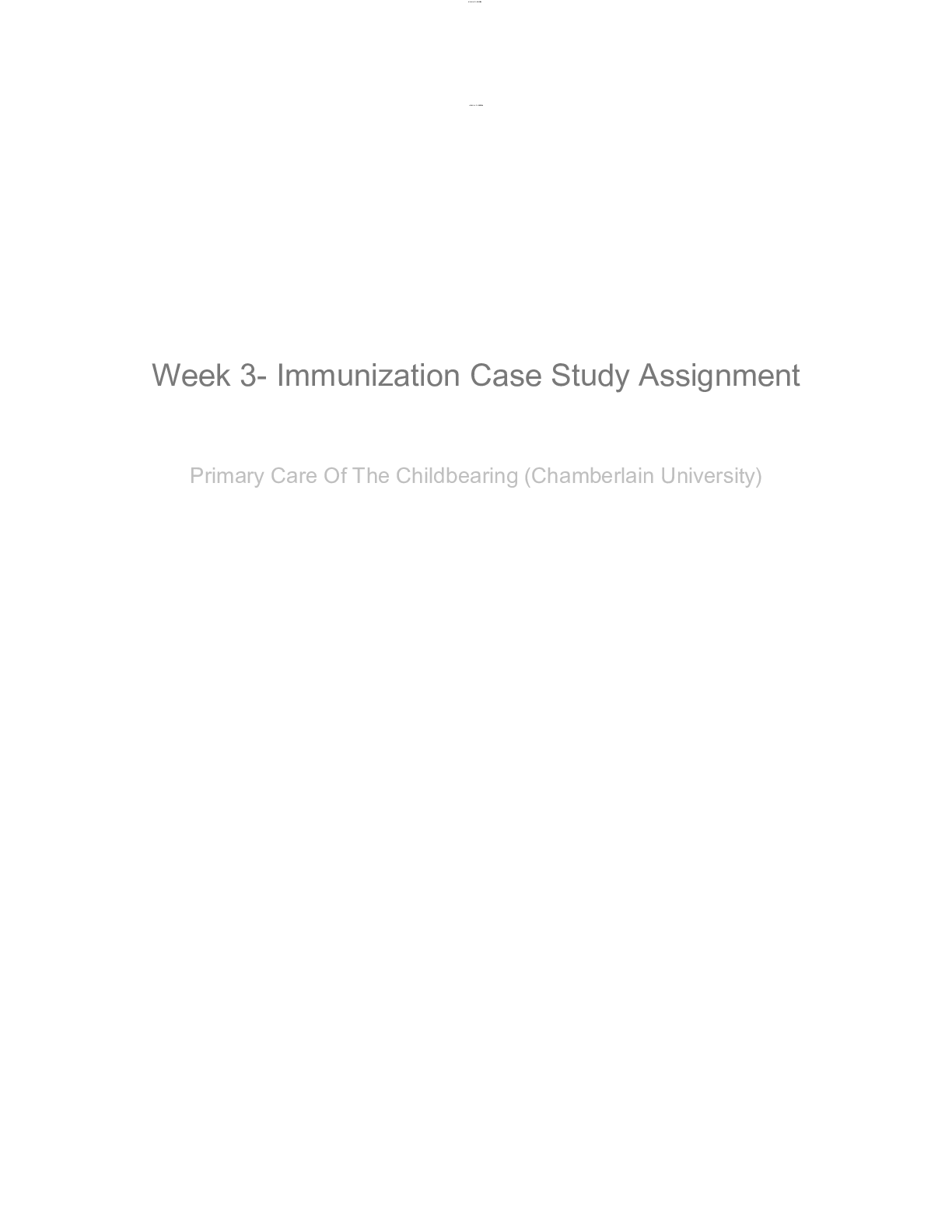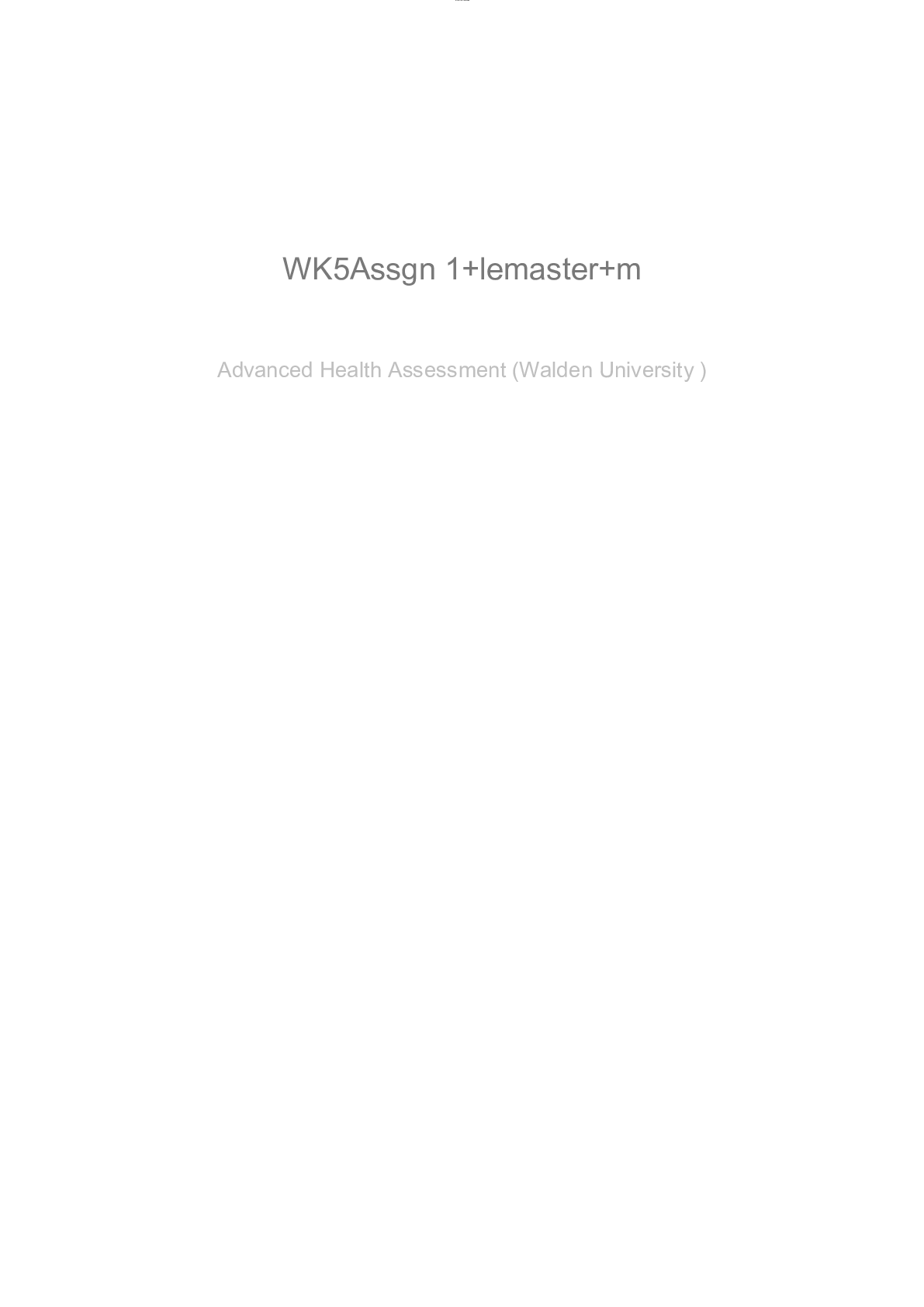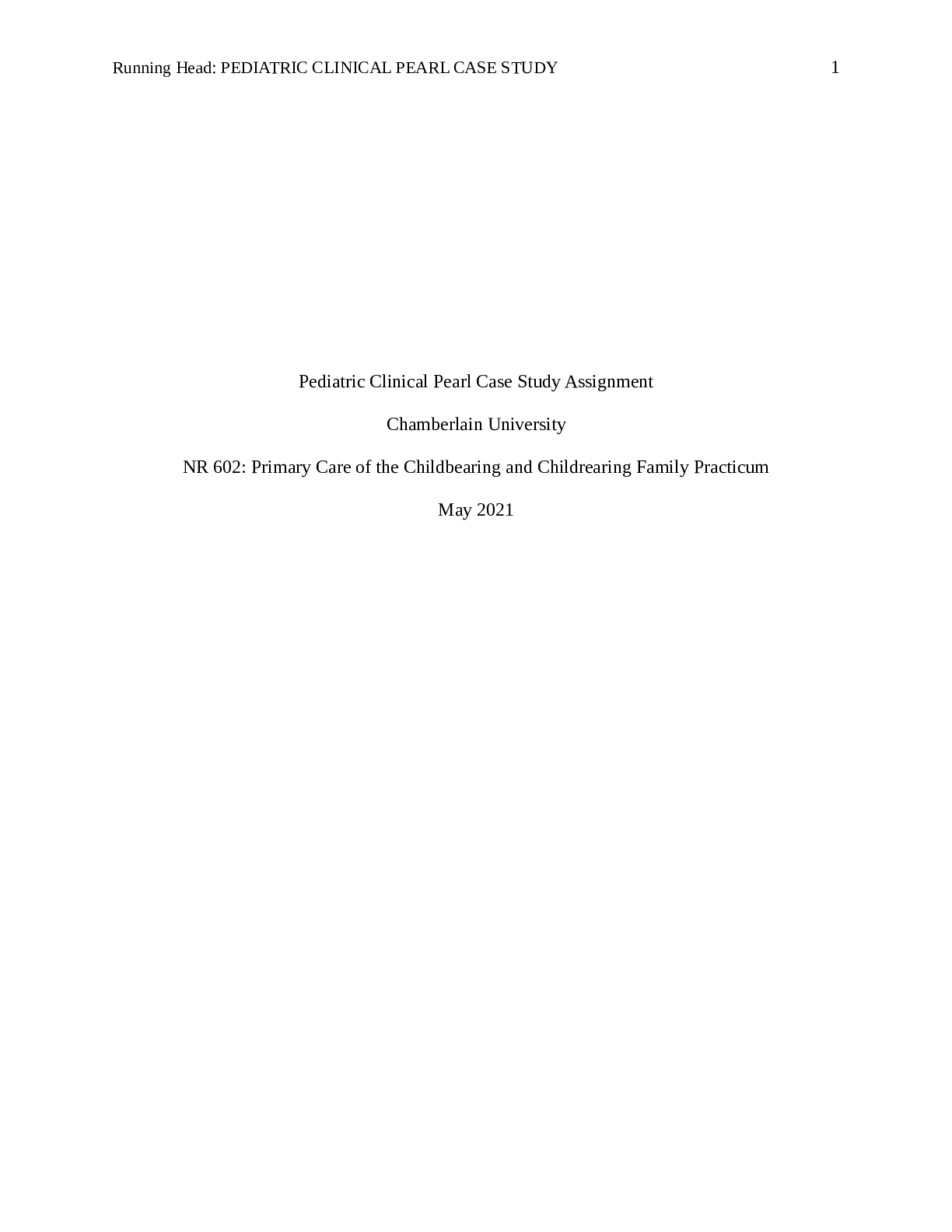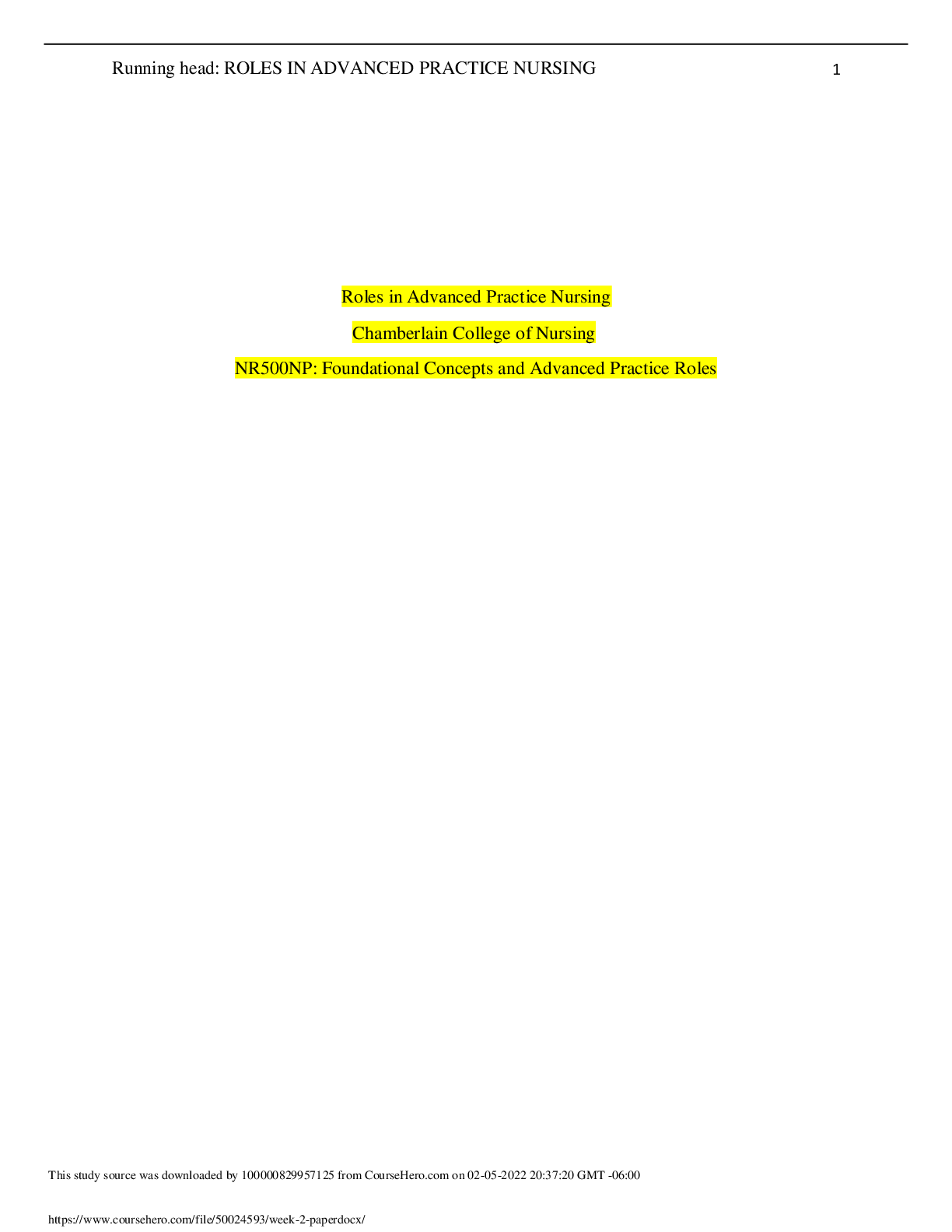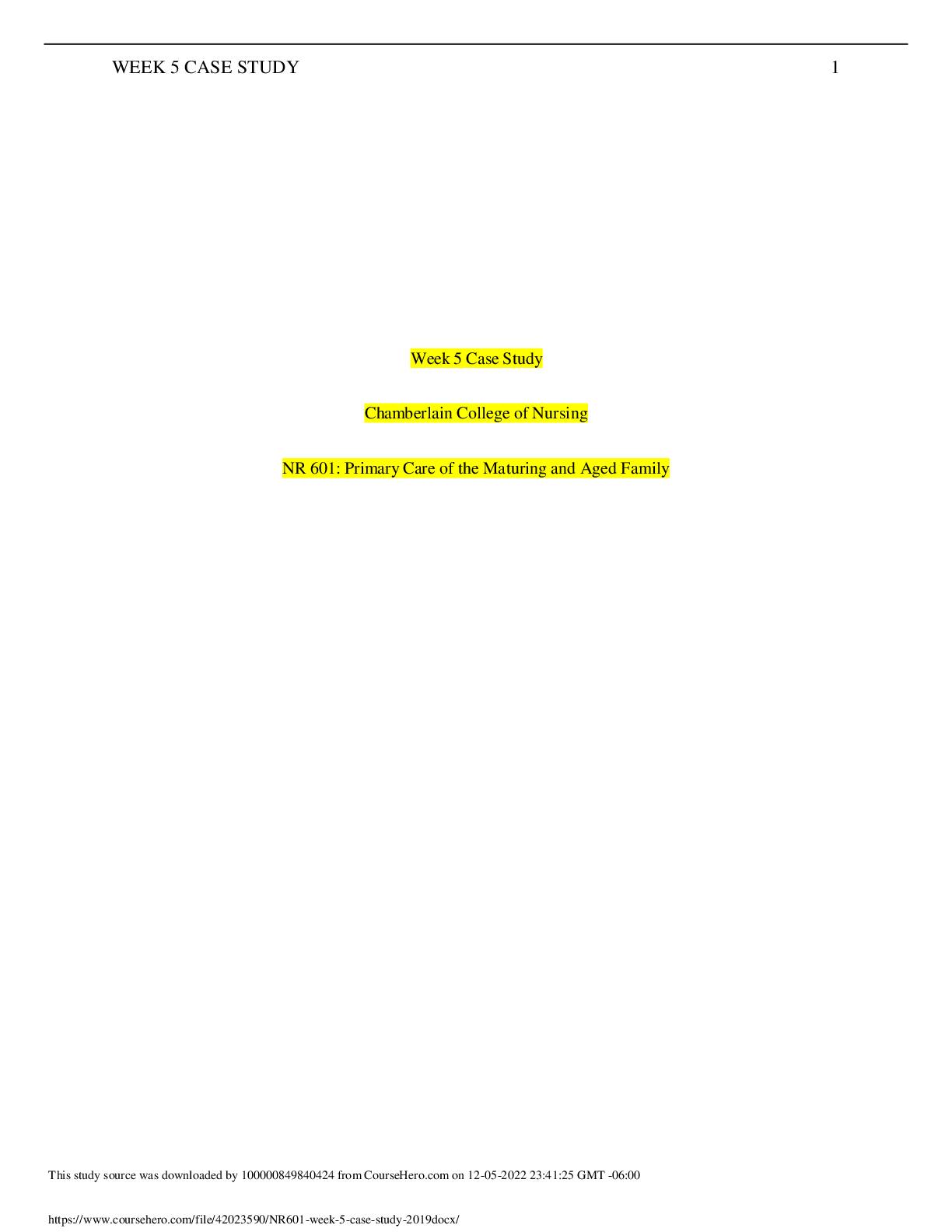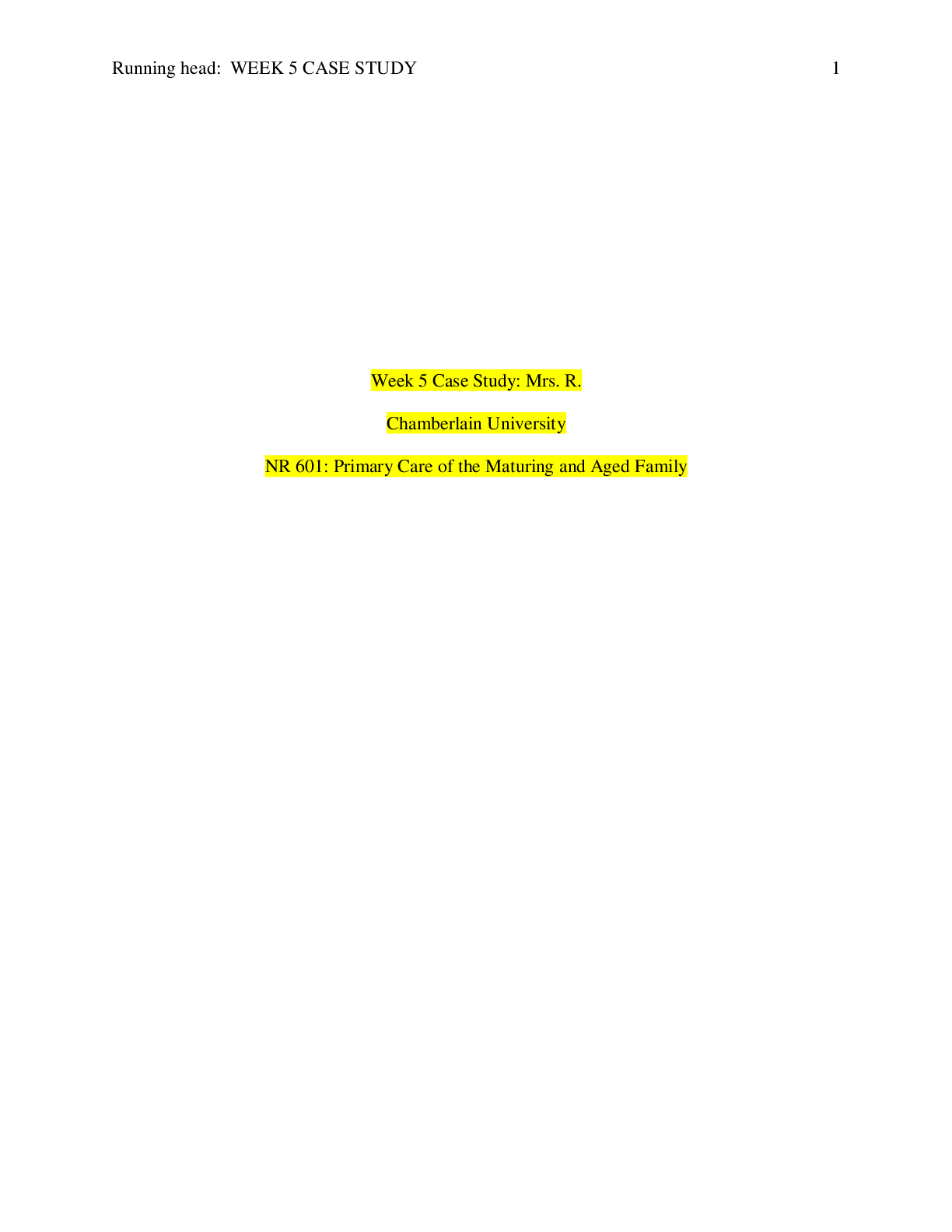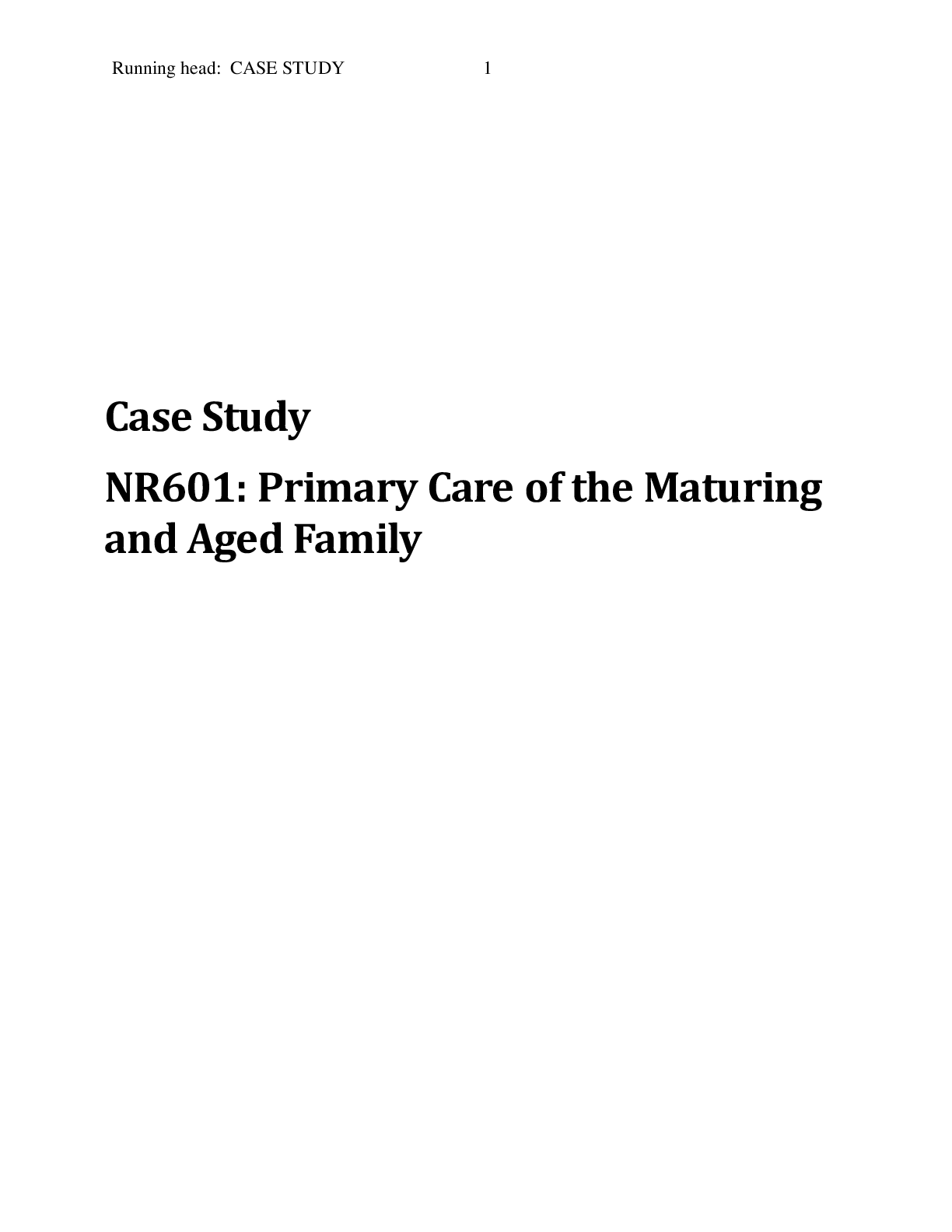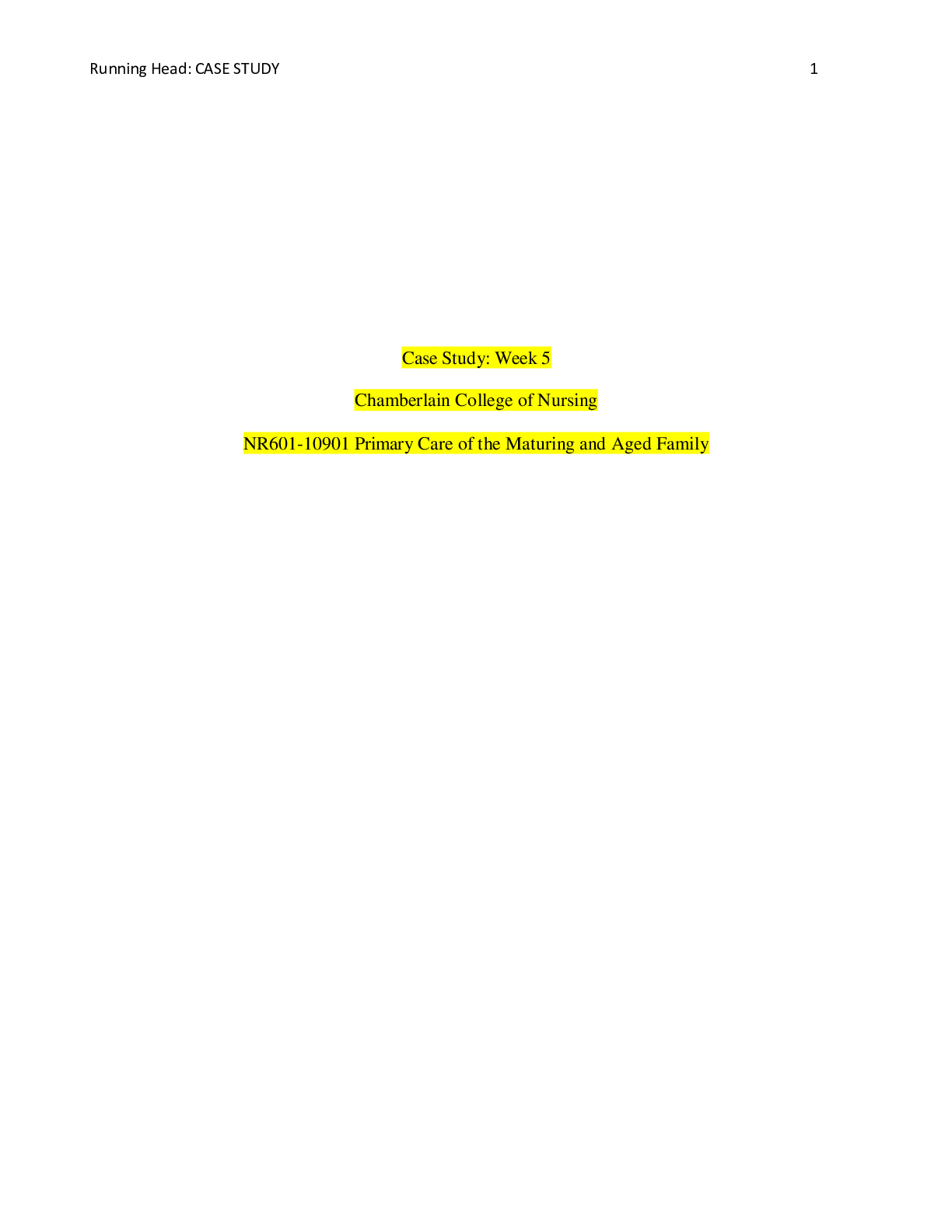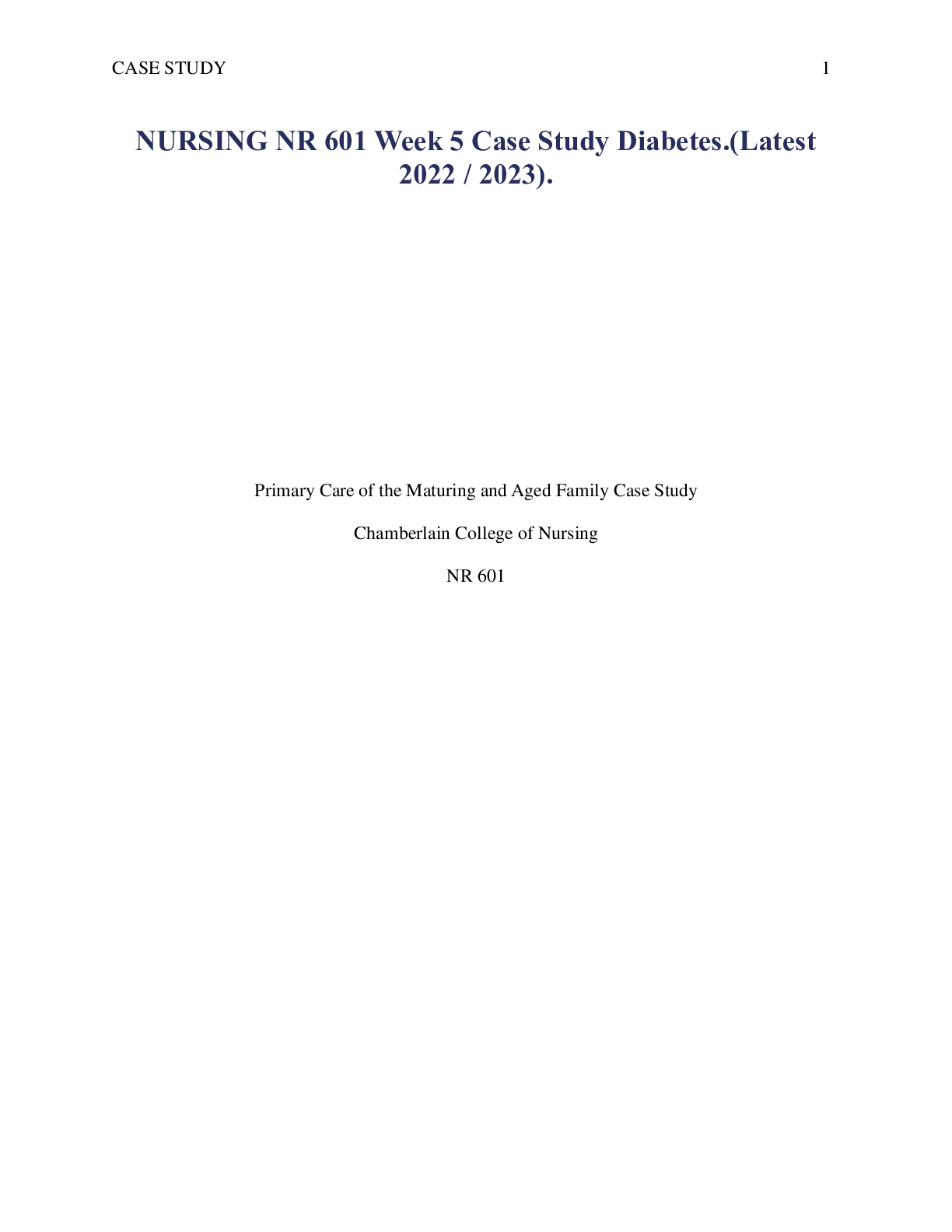Health Care > CASE STUDY > Week 5 Case Study Assignment Kelsey R. Gunter (All)
Week 5 Case Study Assignment Kelsey R. Gunter
Document Content and Description Below
Running head: WEEK 5 CASE STUDY ASSIGNMENT 1 Week 5 Case Study Assignment Kelsey R. Gunter Chamberlain College of Nursing NR 601: Primary Care of the Maturing and Aged Family August 2019 WEEK 5 ... CASE STUDY ASSIGNMENT 2 Week 5 Case Study Assignment The purpose of this paper is to review and analyze a case study involving a patient named Mrs. Wong with the end goal of diagnosing her and developing a management plan of care for her with the incorporation of the national diabetes guidelines. The subsequent sections of this paper are: Assessment, Plan, Medication Costs, SOAP Note, and Conclusion. The assessment will include a primary, secondary and differential diagnosis, the rationale for selecting each diagnosis, the pathophysiology of each diagnosis, and pertinent positive and negative subjective and objective findings for each diagnosis. The plan will include diagnostics, medications, education, referrals and follow-up for each diagnosis. The medication costs section will review individual and total costs for a one-month supply of the prescribed and OTC medications for the patient. The SOAP note will include subjective data, objective data, assessment and plan information. Assessment Mrs. Wong is a 59-year-old Asian woman who presents to the clinic for a planned follow-up appointment for right knee arthritis. Mrs. Wong reports less knee pain and increased mobility with her current treatment plan; however, she reports having new concerns unrelated to her arthritis. Her new concerns consist of increased fatigue over the past two months, increased hunger, increased thirst, and weight gain of four pounds since menopause 4 years ago even though she exercises regularly at a health club that includes walking on a treadmill for a minimum of 30 minutes and lifting light weights at least twice a week. Even though Mrs. Wong initially came to the clinic for a follow-up appointment for her previously diagnosed arthritis in her right knee, her assessment revealed full range of motion in both knees, knees were both nontender to palpation and her gait was normal; therefore, I excluded her original diagnosis of arthritis for this case study review. Primary Diagnosis Diabetes Mellitus Type 2 (E11.9) Pathophysiology Diabetes mellitus type 2 is linked to a genetic susceptibility and risk factors of age, obesity, hypertension, physical inactivity and family history (McCance et al., 2013). Diabetes mellitus type 2 is caused by insulin resistance and/or decreased insulin secretion by beta cells which WEEK 5 CASE STUDY ASSIGNMENT 3 means there is a lack of insulin being produced by the pancreas or the circulating insulin in the body is unable to move glucose into the cells resulting in hyperglycemia (American Diabetes Association, 2018; McCance et al., 2013). Pertinent Positive Findings According to the U.S. Preventive Task Force and the American Diabetes Association, there are four different ways to diagnose a patient with diabetes which are: a fasting plasma glucose of 126 mg/dL or greater, a Hgb A1C of 6.5% or greater, the presence of acute symptoms of diabetes plus a random plasma glucose concentration of 200mg/dL or greater, and a 2-hour oral glucose tolerance test of 200mg/dL or greater (ADA, 2018; U.S. Department of Health and Human Services, 2014). Based off these guidelines, Mrs. Wong’s Hgb A1C of 6.6% and fasting plasma glucose of 127 is indicative of diabetes type 2 (ADA, 2019). Other pertinent positive findings indicative of diabetes type 2 are: 1+ glucose present in urine, increased thirst, increased hunger, fatigue, obesity/BMI of 30.7, and inability to lose weight despite weight loss attempts. In addition, Mrs. Wong’s ethnicity of Asian descent increases her risk of diabetes (ADA, 2018; Kennedy-Malone, Plank, & Duffy, 2019). Pertinent Negative Findings No known family history of diabetes. There is no mentioning of polyuria in the case study which is a common complaint/symptom of diabetes (ADA, 2018). There is also no evidence of previous diagnosis of hyperglycemia or previous lab work that would be indicative of hyperglycemia. Also, Mrs. Wong does not live a sedentary lifestyle as evidence by her reports of walking two times a week for 30 minutes and light weight lifting, in which a sedentary lifestyle is normally present in diabetes type 2 cases (Dunphy et al., 2015). Rationale for Diagnosis The selection of diabetes type 2 was made based off the patient’s subjective and objective information in the case study which consisted of fatigue for 2 months, weight gain despite weight loss measures, increased thirst, increased hunger, fasting plasma glucose level of 127 mg/dL, A1C of 6.6%, 1+ glucose in urine, and a BMI of 30.7. Mrs. Wong’s symptoms along with her lab work results which are consistent with the guidelines for diabetes, it is clear that Mrs. Wong meets the criteria for diabetes mellitus type 2 (ADA, 2019). Secondary Diagnosis Hyperlipidemia (E78.5) WEEK 5 CASE STUDY ASSIGNMENT 4 Pathophysiology Hyperlipidemia is often referred to as dyslipidemia and is a result of increased level of lipids or fats in the body (Dunphy et al., 2015). Hyperlipidemia can lead to plaque build up in the arteries which can increase one’s chances of a cardiovascular complication such as a heart attack or stroke as well as development of coronary artery disease and peripheral arterial disease (Jellinger, 2018). Patients with hyperlipidemia are typically asymptomatic and risk factors that are associated with hyperlipidemia are: diabetes, obesity, history of stroke or heart attack, cardiovascular disease, an elevated LDL, low HDL, elevated triglyceride level and elevated total cholesterol level (Dunphy et al., 2015). Pertinent Positive Findings Mrs. Wong’s lab work is indicative of hyperlipidemia. Her LDL was elevated at 144 mg/dL and an LDL of 130-159 mg/dL is indicative of coronary artery disease (Dunphy et al., 2015). Other lab work that is indicative of hyperlipidemia is her triglycerides that were elevated at 229 mg/dL, total cholesterol level was elevated at 215 mg/dL, and her HDL was low at 32 mg/dL. Normal total cholesterol level is <200 mg/dL, normal HDL is >40 mg/dL and more specifically is >50 mg/dL for females, normal LDL is <100 mg/dL, and normal triglyceride level is <250 mg/dL (Dunphy et al., 2015; Hollier, 2018). In addition to Mrs. Wong’s lab work, she also has an elevated blood glucose level, obesity, history of smoking and weekly intake of alcohol which increases her risk for a cardiovascular event (Woo & Robinson, 2016). Pertinent Negative Findings Mrs. Wong’s medical history and family history were negative for cardiac disease and dyslipidemia. Mrs. Wong’s blood pressure was 112/76 which is a normal blood pressure result and the fact that she does not have a sedentary lifestyle are both negative findings since they are typically associated with hyperlipidemia (Jellinger, 2018). Rationale for Diagnosis The diagnosis of hyperlipidemia was selected because of Mrs. Wong’s obvious abnormal lipid panel results. Also, hyperlipidemia increases the risk of cardiovascular events and can contribute or exacerbate symptoms of diabetes, obesity and fatigue (Woo & Robinson, 2016). Secondary Diagnosis: Obesity with BMI 30.7 (E66.9; Z68.30) [Show More]
Last updated: 1 year ago
Preview 1 out of 22 pages
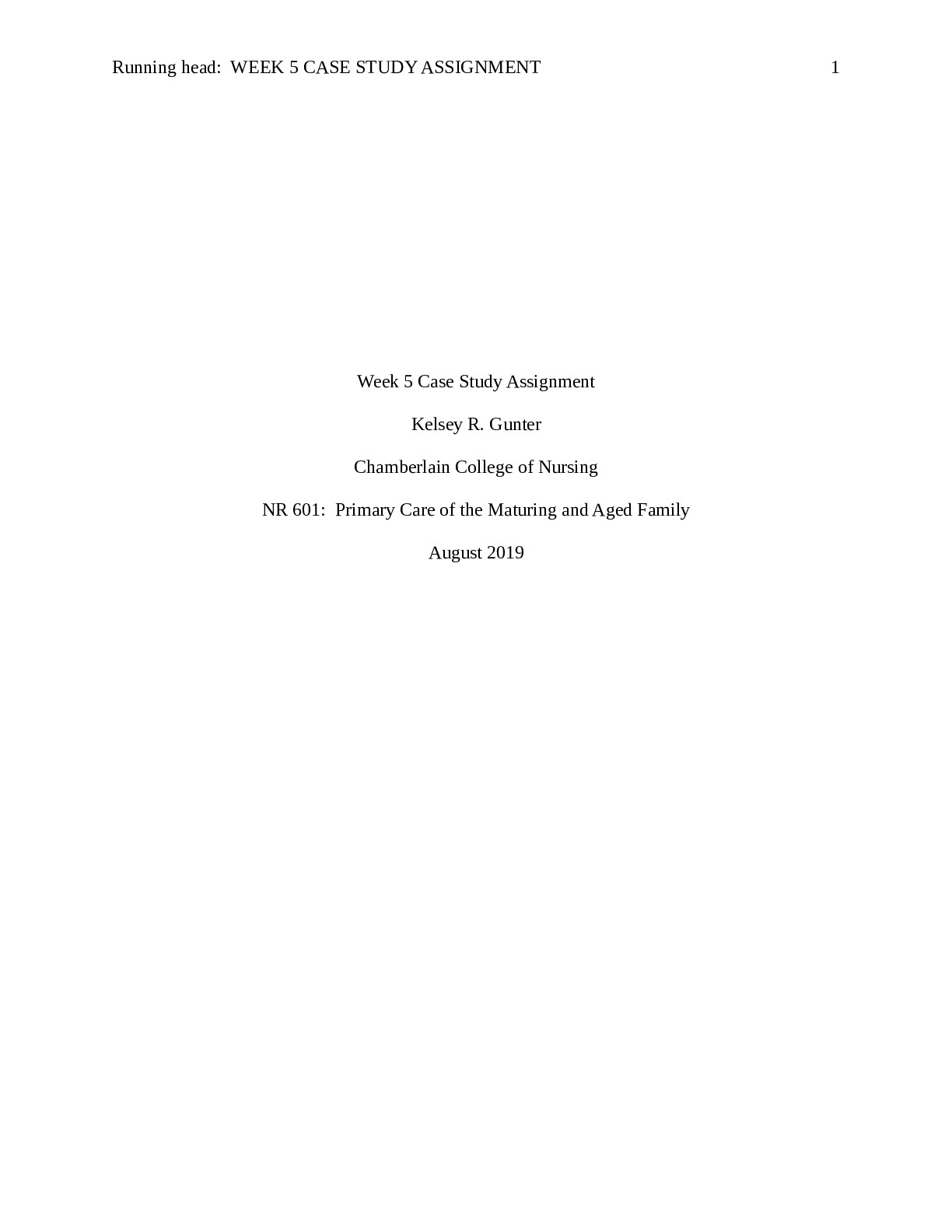
Reviews( 0 )
Document information
Connected school, study & course
About the document
Uploaded On
Apr 30, 2022
Number of pages
22
Written in
Additional information
This document has been written for:
Uploaded
Apr 30, 2022
Downloads
0
Views
34

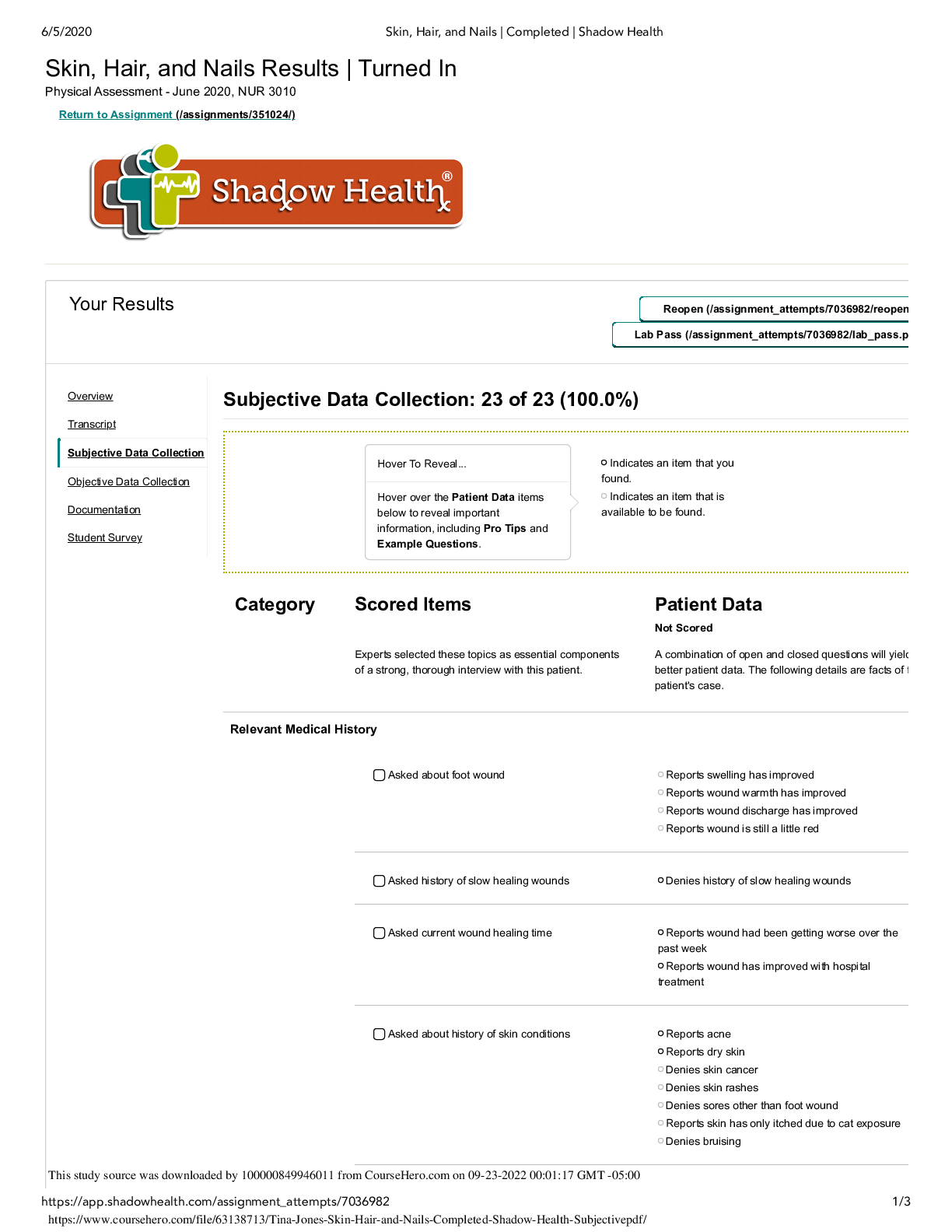
 (1).png)

